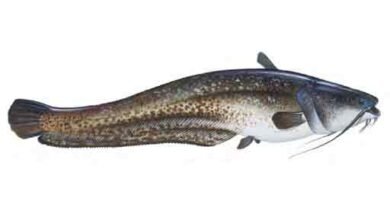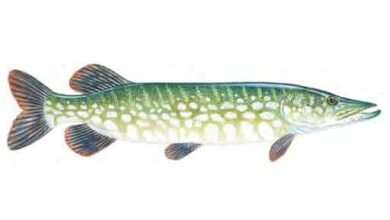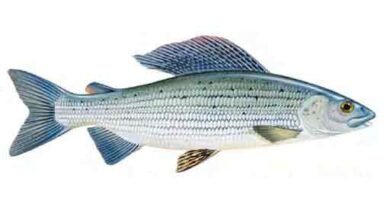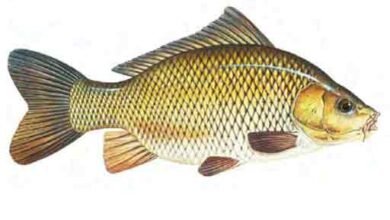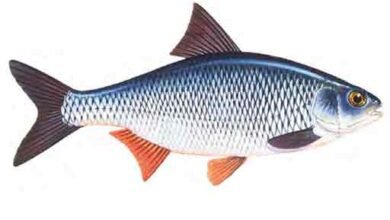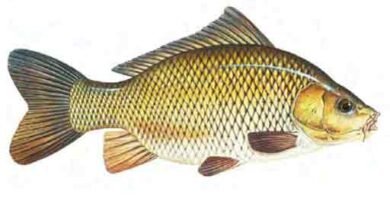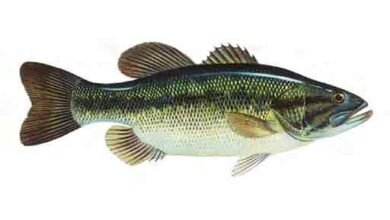Fresh Water Fish Species
There are many different places around the world to catch freshwater fish species, from tumultuous streams and wide rivers to calm ponds and vast lakes. Freshwater fish are very diverse, and their different colours, sizes, habitats and feeding habits fascinate anglers. Some freshwater anglers become so engrossed that they dedicate a lifetime to catching only a handful of species.
-

Wels Catfish
Although the giant wels catfish is native only to eastern and central Europe, it has been introduced into a far wider area, including much of western Europe and Asia. It is among the largest freshwater fish in the world and is considered an exciting sporting challenge. The river Ebro in Spain is one of the most famous places to fish for this big catfish. The wels catfish has a body with no scales, a broad, blunt head, and six distinctive barbels around the mouth. It is a voracious predator that…
-

Northern Pike
The northern pike is an extremely adept, streamlined predator. Its body is designed principally for intense bursts of high speed, while a long, flat snout, plenty of extremely sharp teeth, and complex jaws enable it to take relatively large prey fish and even small aquatic animals. This fish prefers a solitary existence, and it is a skilful and aggressive feeder, often using weeds for cover. It can also be cannibalistic, attacking smaller fish of its own species. It inhabits clear lakes, ponds, and rivers, and is considered a territorial fish.…
-

Grayling
The grayling is not a particularly large fish, growing to a maximum of about 60cm (2ft) in length, but they have a highly distinctive, large dorsal fin. It is gregarious, forming shoals, and prefers to live in well-oxygenated, running water. It is commonly found in rivers, and in North America, it can be found in lakes. It is particularly susceptible to pollution and thrives best in clean water, usually in the upper parts of a river with a gravel or sandy bottom. It feeds predominantly on a varied diet of…
-

Rudd
At first glance, the rudd looks very much like a roach (opposite), but there are two main differences: a rudd’s dorsal fin is set further back than that of a roach, and while a roach has red irises, a rudd’s are yellow to orange. This species is found mainly in relatively still waters, such as canals, ponds, and marshlands. It prefers thickly overgrown areas near to the banks. The rudd is happy to feed closer to the surface than the roach, but the diets of both species are similar, mainly…
-

Common Bream
The most widely fished freshwater bream species is the common bream (also known as the bronze bream). They are found in still and slow-running waters, principally lakes, rivers, and ponds, often swimming in large shoals. Many places in Europe are famous for huge catches of shoaling bream. Bream tend to feed on insects and small crustaceans, but larger ones are known to feed on smaller fish. Not a particularly hard-fighting species, common bream are nevertheless much sought after by many anglers. The roach-bream hybrid is common in some places where…
-

Roach
The roach is one of the most popular freshwater fishing quarries in Europe. This species has an upturned mouth, much like the rudd (opposite), that enables it at times to take food from the surface of the water.The roach inhabits mainly slow-moving rivers, canals, and well-vegetated still waters. Known for its ability to thrive in muddy or poor-quality water, the roach can also thrive in brackish inshore conditions, migrating up rivers from the sea in order to breed. It feeds primarily on insects, crustaceans molluscs, and plants – adult roach…
-

Common Carp
Common (or king) carp are an extremely popular fish throughout Europe and are becoming increasingly popular in other parts of the world. Part of the appeal of this species as a target for anglers is the fact that individuals can grow to very large sizes. In warm, food-rich waters, carp grow rapidly and can easily gain around 1 kg (2lb) per year. The common carp is a deep-bodied fish. It has no scales on the head, but its body is covered withthem. The varied diet of this species includes plants,…
-

Tench Tinca tinca
Tench are popular fishing bait throughout Europe and are known as dog-like warriors when hooked. They live in relatively warm ponds and lakes but can also live in slow-moving or still lower reaches of some rivers. They are known to feed hardest in the early morning, on the banks of dense vegetation such as reed beds. During the winter, tench are known to stay in the mud and not feed. Tench breed in shallow water and the larvae remain attached to the vegetation for a few days after hatching. They…
-

Black Crappie
The black crappie and its close relative the white crappie (Pomoxys annularis) are popular fish for both sport and food in parts of the United States. The black crappie is larger than the white crappie, but neither reaches the same size. These species are relatives of the black bass family and are generally found in the same types of water, such as ponds, streams, and lakes. The black crappie thrives better in slightly clearer water than the white crappie. Crappies hang out around weed beds and on mud or sand…
-

Largemouth Bass
A member of the black bass family, active and sometimes cannibalistic predators, the largemouth bass has an upper jaw that extends to behind its eye, hence the name. This species feeds predominantly on smaller fish, frogs, and crayfish, but does not feed during spawning. As the water warms up, so does its metabolism: the preferred temperatures for feeding are from 10 to 27°C (50 – 80°F); it feeds most heavily from 20 to 27°C (68 – 80°F). Like all species of black bass, the largemouth bass thrives in clear water…
